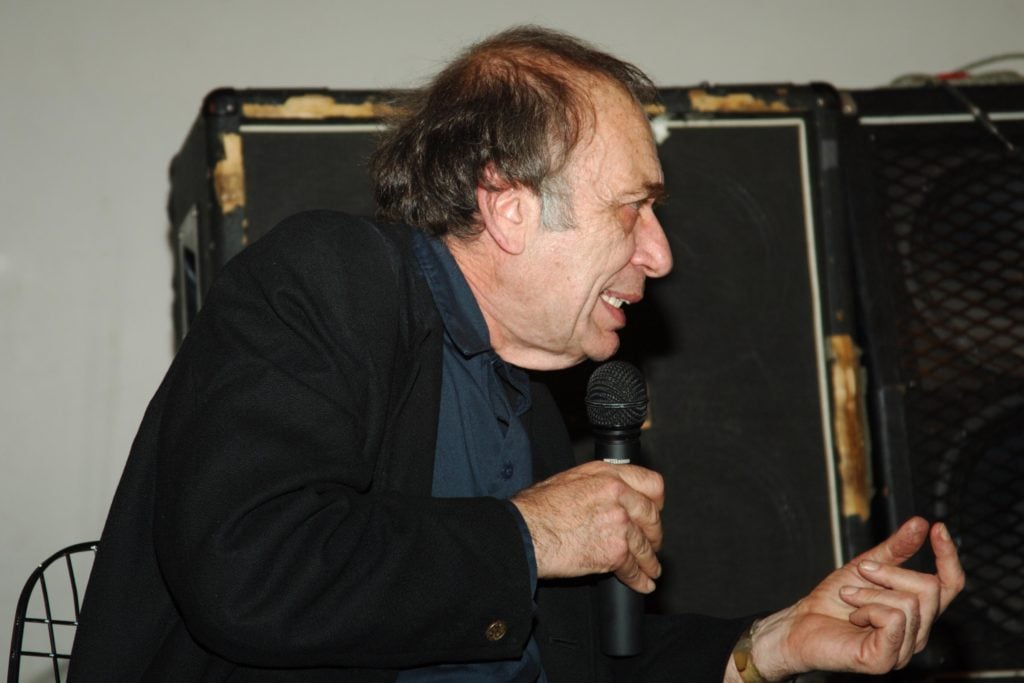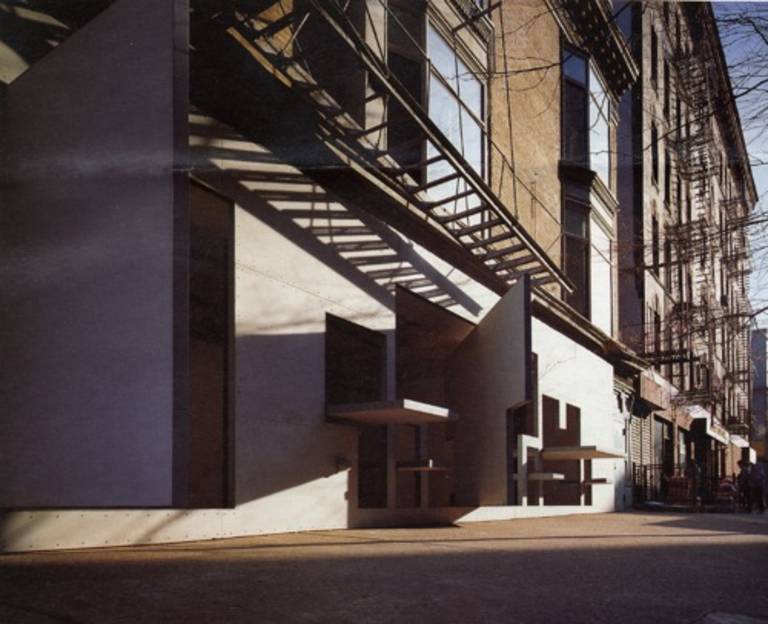People
Vito Acconci, Transgressive Progenitor of Performance Art, Dies at 77
The Bronx-born artist came to fame in the 1970s with an array of unsettling work.

The Bronx-born artist came to fame in the 1970s with an array of unsettling work.

Ben Davis

Vito Acconci, a towering figure with influences on both performance art and experimental architecture, has died at the age of 77. A cause of death has not been confirmed by the estate.
Art Agency Partners, an adviser to the Acconci Studio and estate, confirmed the news in an email this afternoon. “He was only recently beginning to be fully understood,” the statement concludes. “The bodily failure of Acconci, an artist whose work was concerned with the body and its failures, comes too soon.”
Born in the Bronx in 1940, Acconci worked as an experimental poet throughout the ’60s. However, he came to fame in the 1970s, and remains best known for his unsettling work of that time period. As Randy Kennedy wrote last year in the New York Times on the occasion of a tribute to the artist’s early work at MoMA Ps1, “The genetic impact of his performances, photographs, and video works from just an eight-year period—1968 to 1976—is so pervasive that it is difficult to trace.”
“Vito Acconci is one of the artists that influenced me most as curator,” said Klaus Biesenbach, chief curator at large at New York’s Museum of Modern Art and director of MoMA PS1. “Very early on in Berlin I did a small solo show of his work, and I’m very grateful to have been able to work with him so intensely recently. Vito was incredibly vital and strong in our collaboration. I am so deeply shocked and saddened by his passing.”
Among the best known works from his early period is Following Piece (1969), which saw him stalk random strangers on the street until they entered a private space, and Trademarks (1970), for which the artist sat on the ground, naked, biting his own body, then filling the bite marks with ink and using his body as a human stamp.
Acconci’s most remarked-upon work, however, may be the deliberately discomfiting Seedbed (1972), for which he hid himself for two weeks beneath a false floor at the Sonnabend Gallery in January 1971, muttering sexual fantasies about gallery visitors walking above him into a microphone, and audibly masturbating.
As with other performance art pioneers of the ’70s (notably Chris Burden), Acconci’s career trajectory would take him from exploring the raw vulnerability of the body to spectacular, sometimes odd site-specific works. By the mid-70s, he was already moving away from the body, describing the turn as “from a kind of psychological self to a sociological self.”
A major transition point was his first site-specific project, Way Station I (Study Chamber) (1983) at Middlebury College, a small pavilion decorated with oversized images of playing cards on the exterior, and the words “GOD,” “MAN,” and “DOG” on the interior. It sparked heated campus debate, and was burned by vandals in 1985.
Nevertheless, the work marked a definitive turn away from performance to architecture. In 1988, the same year that MoMA had a show dedicated to “the increasingly public nature of the artist’s work over the past five years,” he would found the architectural practice Acconci Studio.

Storefront for Art and Architecture’s experimental facade, by Steven Holl and Vito Acconci. Image courtesy Storefront for Art and Architecture.
Among his most famous commissions is the experimental, transformable façade for the Storefront for Art and Architecture, created with the architect Steven Holl in 1992. Rendering the architecture permeable between private and public, this architectural installation can, in its way, be been seen as a continuation of the themes of the unsettling interpenetration of public and private spaces in Following Piece and Seedbed.
The Studio’s works could create truly unexpected types of spaces, as with the seashell-like Mur Island in the city in Graz, made to be a bridge across a river, a theater, a café, and a playground at once. It was constructed in 2003 in honor of the Austrian city’s stint as European Capital of Culture—a remarkable evolution for such a once-outré artist.

The Murinsel in Graz, Austria, designed by Vito Acconci in 2003. Photo courtesy Wikimedia Commons.
In a 2007 interview with Architectural Record, Acconci was asked why he preferred architecture over art. His answer shows the unexpected ways that he approached both:
The beautiful thing about architecture [is that] it does have the anticipation of renovation always built into it, which I find so refreshing from art because art is supposed to be unchangeable. The only things that are unchangeable are tombstones.
Correction: artnet News incorrectly reported that Acconci died of a stroke. A representative for the estate did not provide details about the cause of death.